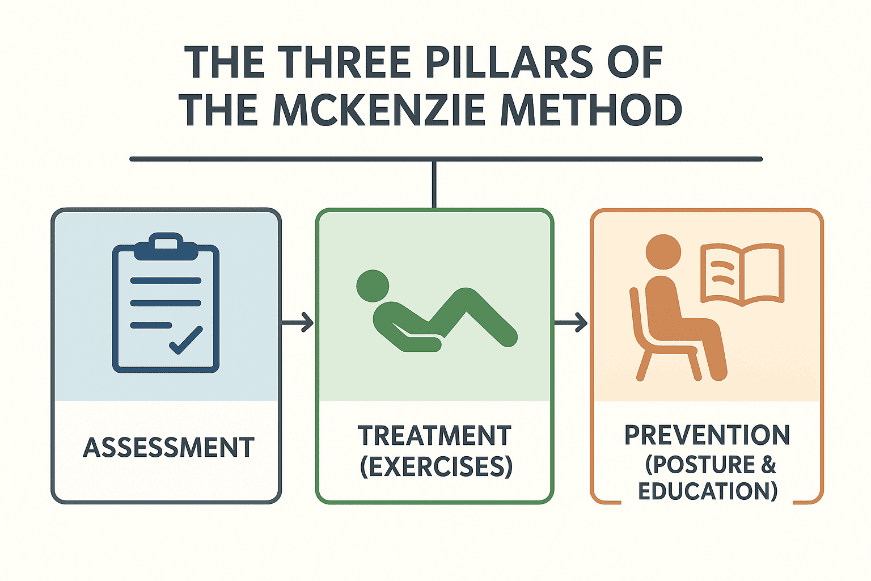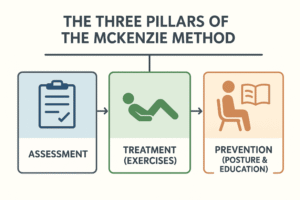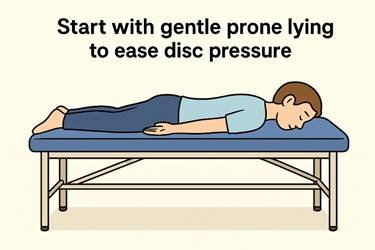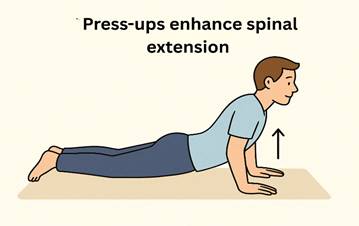Impact of the McKenzie Method on Lumbar Disc Herniation
Introduction:
Lumbar disc herniation is a leading cause of lower back and leg pain, often resulting from the displacement of the disc’s inner material, the nucleus pulposus, through the outer fibrous ring. This disc protrusion can compress spinal nerves, leading to symptoms such as back pain, numbness, tingling, and radiating leg discomfort (sciatica). Conservative management remains the first line of treatment before surgical options are considered. Among the conservative approaches, the McKenzie Method of Mechanical Diagnosis and Therapy (MDT) has gained global recognition for its effectiveness in managing lumbar disc herniation and associated symptoms.
Overview of the McKenzie Method:
The McKenzie Method was developed by Robin McKenzie, a New Zealand physiotherapist, in the 1950s. It is a comprehensive system that combines mechanical assessment, specific exercises, and patient education to manage spinal and extremity problems. The core goal is to reduce pain, restore normal movement, and teach patients how to prevent recurrence through self-management.
The McKenzie Method is structured around three key components:
- Assessment:
A thorough mechanical examination is conducted to determine how specific movements and postures affect the patient’s pain. The therapist identifies the directional preference — usually extension or flexion — that centralizes or reduces pain.
- Treatment:
Based on the findings, individualized exercises are prescribed to promote centralization of symptoms (pain moving from the leg toward the spine, which indicates improvement).
- Prevention:
Patients are taught posture correction, ergonomic habits, and home exercises to prevent recurrence and maintain spinal health.
Mechanism of Action:
In lumbar disc herniation, the McKenzie Method primarily utilizes extension-based exercises. These exercises aim to move the displaced disc material away from the nerve root and back toward its central position, relieving compression and inflammation.
- Repeated extension movements create negative intradiscal pressure, drawing the herniated nucleus pulposus anteriorly.
- The result is pain centralization, reduced nerve irritation, and improved mobility.
- Long-term adherence to McKenzie exercises strengthens spinal stabilizers and improves posture, minimizing the risk of future herniations.
Common McKenzie Exercises for Lumbar Disc Herniation:
Note: These exercises should be performed under the supervision of a qualified physiotherapist, especially during the initial stages.
- Prone Lying (Initial Position):
- Lie face down on a firm surface with arms by your sides.
- Relax and allow your back to settle into a gentle extension.
- Stay in this position for 2–3 minutes, breathing normally.
- Purpose: Reduces acute disc pressure and prepares for further extension.
- Prone on Elbows (Extension in Lying – Stage 1):
- From the prone position, prop yourself up on your elbows while keeping hips on the floor.
- Hold for 5–10 seconds, repeat 10 times.
- Gradually increase holding time to 30–60 seconds as tolerated.
- Purpose: Promotes anterior movement of disc material and centralization of pain.
- Press-Ups (Extension in Lying – Stage 2):
- From prone, place hands under shoulders (as if doing a push-up).
- Gently push your upper body up, keeping hips and pelvis on the floor.
- Hold at the top for 1–2 seconds, then lower down.
- Repeat 10 times, gradually increasing to 10–15 repetitions.
- Purpose: Increases spinal extension, reducing nerve compression and pain.
- Standing Back Extension:
- Stand with feet shoulder-width apart, hands on hips.
- Gently lean backward as far as comfortable, hold for 2–3 seconds, then return upright
- Repeat 10 times, several times per day.
- Purpose: Useful for posture correction and symptom relief during daily activities.
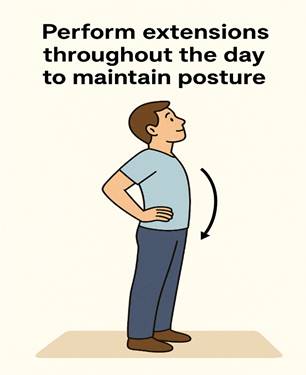
- Postural Correction (Sitting Posture Training):
- Sit upright with the lower back supported and shoulders relaxed.
- Avoid slouching; use a lumbar roll if necessary.
- Perform short extensions every 30–60 minutes during sitting work.
- Purpose: Maintains spinal alignment and prevents re-herniation.
Clinical Evidence and Research Findings:
Several clinical trials and systematic reviews have demonstrated the effectiveness of the McKenzie Method for lumbar disc herniation:
Pain Relief and Centralization: Studies show that patients treated with McKenzie exercises experience faster pain centralization and greater reduction in leg pain compared to general physiotherapy.
Improved Function: The method significantly improves functional scores such as the Oswestry Disability Index (ODI).
Reduced Surgery Rates: Consistent McKenzie therapy reduces the likelihood of needing surgical intervention by promoting early mechanical correction.
Long-Term Outcomes: Patients trained in McKenzie self-management report fewer recurrences and better long-term spine health.
Advantages of the McKenzie Method:
- Non-invasive and drug-free approach.
- Cost-effective, requiring minimal equipment.
- Empowers patients through self-management.
- Prevents recurrence by improving posture and spinal mechanics.
- Quick pain centralization, often within a few sessions.
Limitations:
While highly effective for mild to moderate herniations, the McKenzie Method may not benefit patients with:
- Severe or sequestrated disc herniations.
- Advanced neurological deficits (e.g., foot drop or cauda equina syndrome).
- Poor compliance with home exercise programs.
In such cases, surgical or multidisciplinary management may be necessary.
Conclusion:
The McKenzie Method offers an evidence-based, patient-centred approach to treating lumbar disc herniation. Through mechanical assessment, targeted extension exercises, and posture training, it not only relieves pain but also empowers individuals to manage their condition independently. When performed correctly under professional supervision, the McKenzie Method can significantly improve function, reduce recurrence, and enhance overall spinal health.

